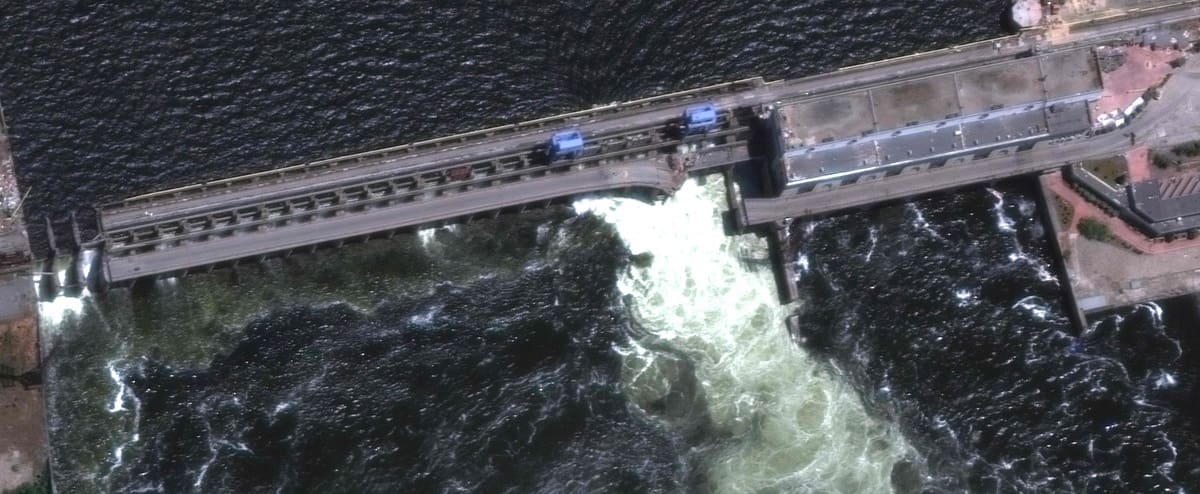Ukraine is asking Europe to significantly increase its electricity deliveries after Russian attacks “on the country’s energy infrastructure” and the destruction of the Kakhovka dam which caused massive flooding, said the Ukrainian Minister of Energy Energy German Galouchchenko Thursday in an interview with AFP.
“We are asking Europe to increase” the electricity import ceiling to bring it to 2 gigawatts instead of the current one gigawatt, he said, also ensuring that the Zaporijjia nuclear power plant does not presented “no imminent risk at this stage” but required to be monitored.
Of the 600 square kilometers affected by the flooding which followed the destruction of the Kakhovka dam in southern Ukraine, “up to 80 localities could be destroyed”, “20,000 homes are without electricity”, and “in minus 10,000 hectares of agricultural land” damaged, listed the minister, citing preliminary figures.
He was speaking on the sidelines of a meeting in Versailles of the International Energy Agency (IEA) devoted to energy policies in the world.
The destruction of the dam also threatens the drinking water supply of cities like Dnipro or Nikolayev, he added, “it’s a disaster”.
Since the invasion of Ukraine by Russia in February 2022, “50% of our energy infrastructure has been attacked”, continued the minister, the Russians using according to him “all kinds of weapons to attack” this infrastructure.
The current ceiling for importing European electricity into Ukraine is “1,050 megawatts”, he explained. However, the existing interconnection infrastructures “allow us to import up to 2 gigawatts of electricity” for next winter.
“Until now, Ukraine covers 100% of its needs” by producing its own electricity, but “we have asked Europe to increase” the ceiling for deliveries, he added.
Asked about the safety of the Zaporizhia nuclear power plant, the largest in Ukraine and Europe, the minister confirmed that the water level of its cooling pond depends on that of the water reservoir of the Kakhovka dam .
“We don’t see any imminent risk at this stage but we need to monitor the situation.” Currently the cooling pond has a height of “16.6 meters, he said. However, the critical level is located at 12.7 meters “to be able to supply the cooling circuits of the plant.
“There is a risk, but not now,” he said, referring to summer temperatures and evaporation.
The Director General of the International Atomic Energy Agency (IAEA), Rafael Grossi is expected in Ukraine next week, he said, adding that the latter would go personally to Zaporizhia.
The Zaporijjia power plant, whose six reactors have been shut down for several months, is at the heart of the Russian-Ukrainian conflict. It has been repeatedly targeted by gunfire and has been cut off from the power grid seven times since its capture by the Russian army on March 4, 2022.
